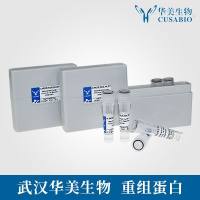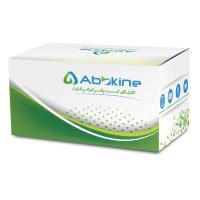Nucleoside Modification with Boron Clusters and Their Metal Complexes
互联网
- Abstract
- Table of Contents
- Materials
- Figures
- Literature Cited
Abstract
General methods for the synthesis of nucleosides modified with borane clusters and metallacarborane complexes are presented. These include: (1) the click chemistry approach based on Huisgen 1,3?dipolar cycloaddition and (2) tethering of the metallacarborane group to the aglycone of a nucleoside via a dioxane ring opening in oxonium metallacarborane derivatives. The proposed methodologies broaden the availability of nucleoside?borane cluster conjugates and open up new areas for their applications. Curr. Protoc. Nucleic Acid Chem. 38:4.37.1?4.37.26. © 2009 by John Wiley & Sons, Inc.
Keywords: boron clusters; metal complexes; click chemistry; nucleosides; bioorganic?inorganic materials
Table of Contents
- Introduction
- Basic Protocol 1: Preparation of Nucleoside‐Boron Cluster Conjugates via Click Chemical Ligation Method
- Basic Protocol 2: Preparation of Nucleoside‐Boron Cluster Conjugates via Cyclic Ether Ring Opening in Cyclic Ether Boron Cluster Oxonium Adducts
- Commentary
- Literature Cited
- Figures
Materials
Basic Protocol 1: Preparation of Nucleoside‐Boron Cluster Conjugates via Click Chemical Ligation Method
Materials
Basic Protocol 2: Preparation of Nucleoside‐Boron Cluster Conjugates via Cyclic Ether Ring Opening in Cyclic Ether Boron Cluster Oxonium Adducts
Materials
|
Figures
-
Figure 4.37.1 Synthesis of libraries of nucleoside‐boron cluster conjugates via chemical ligation using nucleoside boron cluster acceptors and boron cluster donors. R1 = 7,8‐dicarba‐ nido ‐undecaborane‐10‐yl, R2 = 3‐cobalt bis(1,2‐dicarbollide‐8‐yl), R3 = 3‐iron bis(1,2‐dicarbollide‐8‐yl). View Image -
Figure 4.37.2 Synthesis of boron cluster donors containing terminal azido or alkynyl group. View Image -
Figure 4.37.3 Synthesis of boron cluster cyclic oxonium derivatives—convenient precursors of boron cluster donors in Huisgen's 1,3‐dipolar cycloaddition reaction. View Image -
Figure 4.37.4 Synthesis of nucleoside boron cluster acceptors. View Image -
Figure 4.37.5 Synthesis of pyrimidine nucleoside‐metallacarborane conjugates via cyclic ether ring opening in cyclic ether boron cluster adducts. View Image -
Figure 4.37.6 Synthesis of purine nucleoside‐metallacarborane conjugates via cyclic ether ring opening in cyclic ether boron cluster adducts. View Image -
Figure 4.37.7 UV/vis (95% EtOH) spectrum of the thymidine boron cluster conjugate S.7 . Characteristic absorption for metallacarborane moiety appears ∼310 nm. View Image -
Figure 4.37.8 FT‐IR (KBr) spectrum of the thymidine boron cluster conjugate S.7 . Characteristic B–H stretch appears at 2562 cm–1 . View Image -
Figure 4.37.9 1 H NMR (CD3 OH, 250MHz, 25°C, TMS) spectrum of the thymidine boron cluster conjugate S.7 . View Image -
Figure 4.37.10 MS‐ESI spectrum of the thymidine boron cluster conjugate S.7 . m/z (%): molecular formula: calcd. for C23 H49 B18 CoN5 O7 761.2, found 762.0 (100) [M+1]– . View Image
Videos
Literature Cited
| Literature Cited | |
| Barth, R.F., Coderre, J.A., Graça, M., Vicente, H., and Blue, T.E. 2005. Boron neutron capture therapy of cancer. Current status and future prospects. Clin. Cancer Res. 11:3987‐4002. | |
| Byun, Y., Yan, J., Al‐Madhoun, A.S., Johnsamuel, J., Yang, W., Barth, R.F., Eriksson, S., and Tjarks, W. 2005. Synthesis and biological evaluation of neutral and zwitterionic 3‐carboranyl thymidine analogues for boron neutron capture therapy. J. Med. Chem. 48:1188‐1198. | |
| Chen, Y. and Barker, G.L. 1999. Synthesis and properties of ABA amphiphiles. J. Org. Chem. 64:6870‐6873. | |
| Hawthorne, M.F. 1993. The role of chemistry in the development of boron neutron capture therapy of cancer. Angew. Chem. Int. Ed. Engl. 32:950‐984. | |
| Hawthorne, M.F., Young, D.C., Andrews, T.D., Howe, D.V., Pilling, R.L., Pitts, A.D., Reinjes, M., Warren, L.F. Jr., and Wegner, P.A. 1968a. Dicarbollyl derivatives of the transition metals. Metallocene analogs. J. Am. Chem. Soc. 90:879‐896. | |
| Hawthorne, M.F., Young, D.C., Garrett, P.M., Owen, D.A., Schwerin, S.G., Tebbe, F.N., and Wegner, P.A. 1968b. The preparation and characterization of the (3)‐1,2‐ and (3)‐1,7‐dicarbadodecahydroundecaborate(‐1) ions J. Am. Chem. Soc. 90:862‐868. | |
| Jelen, F., Olejniczak, A.B., Kourilova, A., Leśnikowski, Z.J., and Palecek, E. 2009. Electrochemical DNA detection based on polyhedral boron cluster label. Anal. Chem. 81:840‐844. | |
| Johnsamuel, J., Lakhi, N., Al‐Madhoun, A.S., Byun, Y., Yan, J., Eriksson, S., and Tjarks, W. 2004. Synthesis of ethyleneoxide modified 3‐carbonanyl thymine analogues and evaluation of their biochemical, physiochemical, and structural properties. Bioorg. Med. Chem. 12:4769‐4781. | |
| Leites, L.A. 1992. Vibrational spectroscopy of carboranes and parent boranes and its capabilities in carborane chemistry. Chem. Rev. 92:279‐323. | |
| Lesnikowski, Z.J. 2003. Boron clusters—A new entity for DNA‐oligonucleotide modification. Eur. J. Org. Chem. 4489‐4500. | |
| Lesnikowski, Z.J. 2007a. Boron units as pharmacophores—New applications and opportunities of boron cluster chemistry. Collect Czech. Chem. Commun. 72:1646‐1658. | |
| Lesnikowski, Z.J. 2007b. DNA as a platform for new biomaterials. Metal‐containing nucleic acids. Cur. Org. Chem. 11:355‐381. | |
| Lesnikowski, Z.J., Shi, J., and Schinazi, R.F. 1999. Nucleic acids and nucleosides containing carboranes, J. Organomet. Chem. 581:156‐169. | |
| Lesnikowski, Z.J., Paradowska, E., Olejniczak, A.B., Studzińska, M., Seekamp, P., Schüβler, U., Gabel, D., Schinazi, R.F., and Plešek, J. 2005. Towards new boron carriers for boron neutron capture therapy: Metallacarboranes and their nucleoside conjugates. Bioorg. Med. Chem. 13:4168‐4175. | |
| Oglivie, K.K. 1973. The tert‐butyldimethylsilyl group as a protecting group in deoxynucleosides. Can. J. Chem. 51:3799‐3807. | |
| Olejniczak, A.B., Koziołkiewicz, M., and Leśnikowski, Z.J. 2002. Carboranyl oligonucleotides. 4. Synthesis, and physicochemical studies of oligonucleotides containing 2′‐O‐(o‐carboran‐1‐yl)methyl group. Antisense Nucleic Acid Drug Dev. 12:79‐94. | |
| Olejniczak, A.B., Plešek, J., Kriz, O., and Leśnikowski, Z.J. 2003. Nucleoside conjugate containing metallacarborane group and its incorporation into DNA‐oligonucleotide. Angew. Chem. Int. Ed. Engl. 42:5740‐5743. | |
| Olejniczak, A.B., Sut, A., Wróblewski, A.E., and Lesnikowski, Z.J. 2005. Infrared spectroscopy of nucleoside and DNA‐oligonucleotide conjugates labeled with carborane or metallacarborane group. Vib. Spectrosc. 39:177‐185. | |
| Olejniczak, A.B., Mucha, P., Grüner, B., and Lesnikowski, Z.J. 2007a. DNA‐dinucleotides bearing cobalt‐ and iron‐biscarborane complex. Organometallics 26:3272‐3274. | |
| Olejniczak, A.B., Plešek, J., and Lesnikowski, Z.J. 2007b. Nucleoside‐metallacarborane conjugates for base‐specific metal‐labeling of DNA. Chem. Eur. J. 13:311‐318. | |
| Olejniczak, A.B., Grüner, B., Sicha, V., Broniarek, S., and Lesnikowsk, Z.J. 2009. Metallacarboranes al labels for multipotential electrochemical coding of DNA. [3‐Chromium bis(dicarbollide)](‐1)ate and its nucleoside conjugates. Electroanalysis 21:501‐506. | |
| Plešek, J. 1992. Potential applications of the boron cluster compounds. Chem. Rev. 92:269‐278. | |
| Plešek, J., Hermanek, S., Franken, A., Cisarova, I., and Nachtigal, C. 1997. Dimethyl sulfate induced nucleophilic substitution of the [bis(1,2‐dicarbollido)‐3‐cobaltate(1−)] ion. Syntheses, properties and structures of its 8,8′‐m‐sulfato, 8‐phenyl, and 8‐dioxane derivatives. Collect. Czech. Chem. Commun. 62:47‐56. | |
| Plešek, J., Grüner, B., Macháček, J., Cìsařová, I., and čáslavský, J. 2007. 8‐Dioxane ferra(III) bis(dicarbollide): A paramagnetic functional molecule as versatile building block for introduction of a Fe(III) centre into organic molecules. J. Organomet. Chem. 692:4801‐4804. | |
| Rong, F.G., Soloway, A.H., Ikeda, S., and Ives, D.H. 1995. Synthesis of 5‐tethered carborane‐containing nucleosides as potential agents for DNA incorporation. Nucleosides Nucleotides 14:1873‐1887. | |
| Semioshkin, A.A., Sivaev, I.B., and Bregadze, V.I. 2008. Cyclic oxonium derivatives of polyhedral boron hydrides and their synthetic applications. Dalton Trans. 8:977‐992. | |
| Semioshkin, A., Laskova1, J., Wojtczak, B., Andrysiak, A., Godovikov, I., Bregadze, V., and Lesnikowski, Z.J. 2009. Synthesis of closo‐dodecaborate based nucleoside conjugates. J. Organomet. Chem. 694:1375‐1379. | |
| Sivaev, I.B. and Bregadze, V.I. 2000. Chemistry of nickel and iron bis(dicarbollides). A review. J. Organomet. Chem. 614‐615:27‐36. | |
| Tjarks, W. 2000. The use of boron clusters in the rational design of boronated nucleosides for neutron capture therapy of cancer. J. Organomet. Chem. 614:37‐47. | |
| Tjarks, W., Anisuzzaman, A.K.M., Liu, L., Soloway, A.H., Barth, R.F., Perkins, D.J., and Adams, D.A. 1992. Synthesis and in vitro evaluation of boronated uridine and glucose derivatives for boron neutron capture therapy. J. Med. Chem. 35:1628‐1633. | |
| Valliant, J.F., Guenther, K.J., King, A.S., Morel, P., Schaffer, P., Sogbein, O.O., and Stephenson, K.A. 2002. The medicinal chemistry of carboranes. Coord. Chem. Rev. 232:173‐230. | |
| Wojtczak, B., Olejniczak, A.B., Przepiórkiewicz, M., Andrysiak, A., and Leśnikowski, Z.J. 2008a. Highly lipophilic adenosine phosphates bearing para‐carborane (C2B10H11) modification. Collect Czech. Chem. Commun. 73:175‐186. | |
| Wojtczak, B.W., Andrysiak, A., Grüner, B., and Lesnikowski, Z.J. 2008b. “Chemical Ligation”—A versatile method for nucleoside modification with boron clusters. Chem. Eur. J. 14:10675‐10682. |







